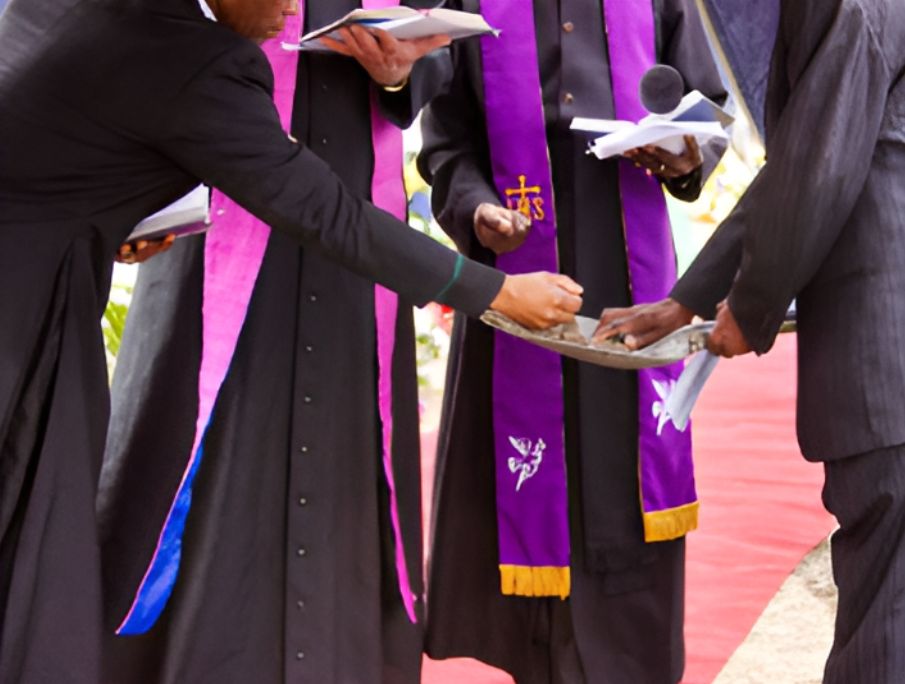Have you ever wondered why ministers, especially women, wear special robes when they lead church services? If you’ve been to a church, you might have seen them wearing long, flowing garments that look both elegant and significant. These robes aren’t just for show—they have a deep meaning and history behind them. Let’s find out why minister robes for women are so important and what they represent.
The Importance of Minister Robes for Women
Minister robes for women are more than just clothes. They are a symbol of the minister’s role and responsibilities in the church. These robes help to show respect for the sacred space and the special duties of the minister. Let’s look at a few reasons why minister robes for women are so important.
- Symbol of Authority: When a woman wears a minister robe, it represents her role and authority in the church. The robe helps to show that she is in a position of leadership and is there to guide and support the congregation.
- Respect for Tradition: Church robes have been worn for centuries. By wearing these robes, women continue a long-standing tradition that connects them with the history of the church. It shows that they are part of a rich heritage of faith and practice.
- Uniformity and Equality: Minister robes for women help to create a sense of unity and equality among ministers. Everyone wears similar robes, which helps to focus on the message and service rather than on individual differences.
- Special Occasions: Different occasions call for different types of robes. For special events like baptisms, weddings, or important church ceremonies, the minister may wear special robes that are different from those worn during regular services.
What Are Minister Robes for Women?
These Minister robes for women come in various styles and designs. Each type of robe serves a different purpose and is worn for different reasons. Here are some common types of minister robes for women:
- Traditional Robes: These are often long and flowing, made from rich fabrics. They are worn during formal services and special occasions. Traditional robes usually have a classic design that has been used for many years.
- Seasonal Robes: During different times of the church year, such as Advent or Lent, women might wear robes in colours that match the season. For example, purple might be worn during Advent, while white is often worn for Easter.
- Ceremonial Robes: For special ceremonies like ordinations or weddings, women might wear robes with unique designs or additional decorations. These robes highlight the importance of the event and make it feel more special.
The Role of Bishop Robes
Bishop robes are another type of robe worn in the church. These robes are often more elaborate and are worn by bishops or high-ranking officials. Bishop robes are significant for several reasons:
- Higher Status: Bishop robes are usually more ornate and decorated, signifying the bishop’s higher status in the church. These robes show that the bishop has a special role and responsibility.
- Ceremonial Use: Like minister robes, bishop robes are worn for important ceremonies and services. They help to underline the significance of the occasion and the bishop’s role in it.
- Distinctive Design: Bishop robes often have specific design elements, such as intricate embroidery or special colours, which set them apart from regular minister robes.
The History Behind Church Robes
The tradition of wearing church robes has a long history. Many of the designs and styles have been passed down through generations. Understanding this history helps to appreciate why minister robes for women are so important.
- Early Church Practices: In the early days of Christianity, ministers wore simple garments that were common at the time. Over the years, these garments became more elaborate as the church developed its own traditions.
- Mediaeval Influence: During the mediaeval period, church robes became more ornate and were often made from luxurious fabrics. This was partly due to the influence of the wealthy and powerful church officials of the time.
- Modern Adaptations: Today, church robes come in many styles and are adapted to fit modern needs while still respecting traditional designs. This allows for personal expression while maintaining the respect and reverence associated with these garments.
Choosing the Right Minister Robe
Selecting the right minister robe is important for both comfort and appearance. Women ministers need to choose robes that suit their role and the occasion. Here are some factors to consider:
- Fit and Comfort: A well-fitting robe is essential. It should be comfortable to wear for long periods, as ministers often lead services and participate in various activities throughout the day.
- Material: The fabric of the robe affects how it looks and feels. Common materials include satin, velvet, and polyester blends. Each material offers different levels of comfort and durability.
- Design and Colour: The design and colour of the robe can be chosen based on the occasion and the church’s traditions. Some churches have specific guidelines about what colours and designs are appropriate.
Caring for Minister Robes
Proper care is important to keep minister robes looking their best. Here are some tips for maintaining these important garments:
- Cleaning: Many minister robes need to be dry-cleaned. Always follow the care instructions provided to ensure the robe remains in good condition.
- Storage: When not in use, robes should be stored in a cool, dry place. Hanging them in a garment bag helps protect them from dust and wrinkles.
- Regular Checks: Periodically check the robe for any signs of wear or damage. Prompt repairs can help extend the life of the robe.
The Symbolism of Wearing a Robe
Wearing a minister robe is not just about looking formal; it carries deep symbolism. The robe represents the minister’s role and their commitment to their faith and community.
- Commitment to Service: The robe is a sign of the minister’s dedication to serving the church and its members. It shows that they take their role seriously and are committed to their duties.
- Respect for Tradition: By wearing a robe, ministers honor the traditions of the church and connect with those who have served before them. It’s a way of showing respect for the history and values of the church.
- Unified Appearance: The robe helps create a sense of unity among ministers and congregation members. It allows everyone to focus on the message and worship rather than on individual differences.
Conclusion
Minister robes for women, including bishop robes, play an important role in church services and ceremonies. They are not just garments but symbols of authority, tradition, and commitment. By wearing these robes, women ministers honour their roles and the rich history of the church.
If you’re interested in learning more about the significance of minister robes or need help selecting the right robe, reach out to your local church community or robe supplier. Understanding the meaning behind these garments can enhance your appreciation for the role they play in worship and tradition.




